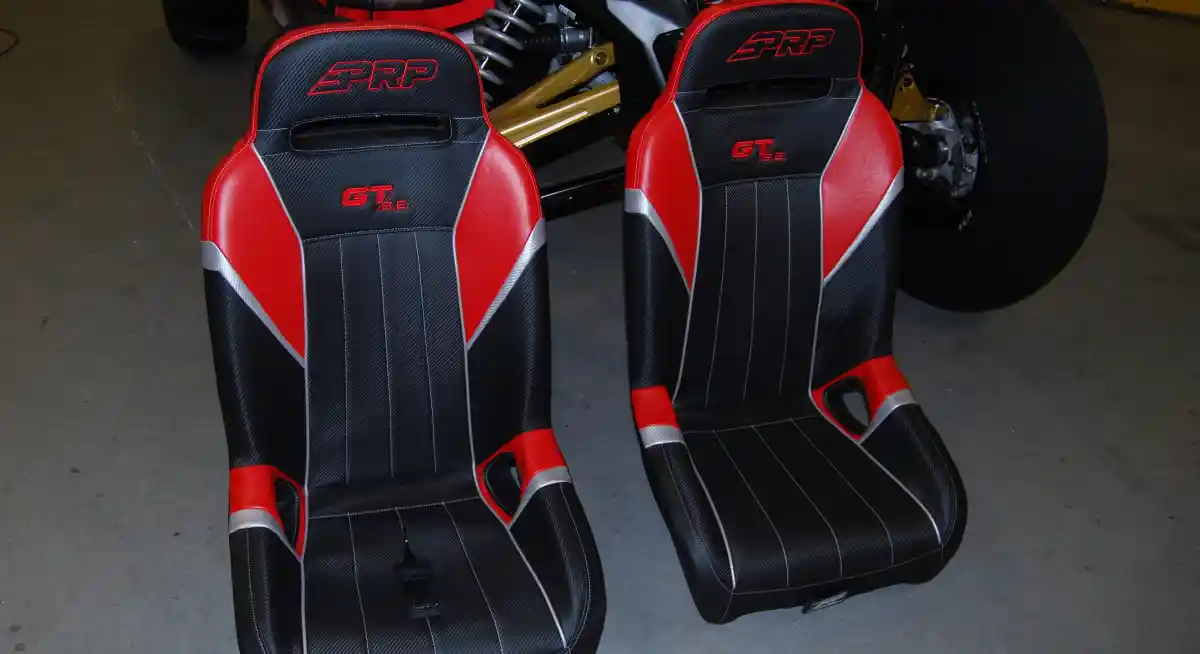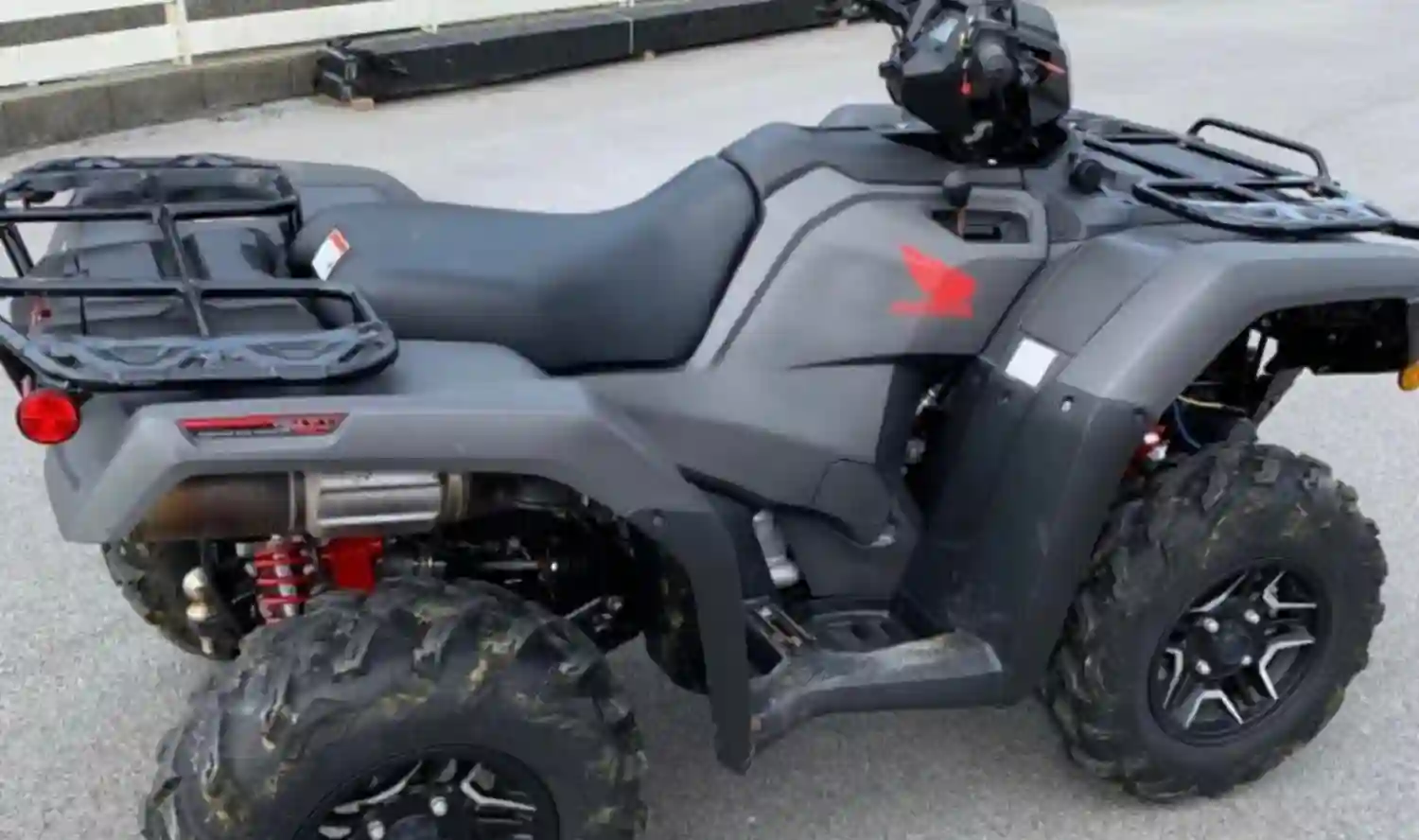What are suspension seats? The term suspension seat originates from the liner suspended between the steel frame. The liner stretches when the passenger rises and falls, preventing the human body from repeatedly slamming into a hard surface like those present in standard seats. This offers unmatched comfort when riding, enabling longer trips and less back and muscle soreness. Without further ado, this article gives further details on what suspension seats are, how they work, their components, whether it is safe, and many more.
What are suspension seats?

Suspension seats are designed to add comfort to your ATV/UTV, excavators, front-end loaders, tractor, forklift, and other heavy equipment that handle construction and agriculture. These robust seats balance the performance of your ride with high-quality suspension parts.
These suspension seats make it easier for you to work since they eliminate bouncing on rough terrain, reduce seat vibration during vigorous operation, and maintain a steady and pleasant working angle even on high slopes.
These seats’ suspension parts can be adjusted to provide the most comfortable ride possible for any special circumstance. Suspension seats can also be adjusted for everything from the tilt to the overall ride quality and height of the suspension stroke, which makes them ideal for equipment with numerous users. Additionally, they are available in a range of capacities to accommodate a user’s weight.
How do suspension seats work?
Generally sitting hurts. Your spine forms a C shape when you sit, which causes your head to hang forward from the supporting bones in your neck. This is not the position to be in when subjected to vertical impact, which typically occurs when your off-road vehicle strikes a significant pothole on the road. Sitting in one position in a car stiffens your back muscles, which can cause achiness and muscle spasms. If you often experience back pain, you want to take breaks more frequently, advisably after every 30 to 60 minutes.
Sitting in a car can also result in head jolts that can lead to neck disk ruptures and deformation injuries. This is why off-road vehicle suspension seats are made to absorb the majority of impacts, substantially lowering their severity to bearable levels.
Sitting in an off-road vehicle suspension seat is similar to lounging in a hammock. As opposed to being firmly attached to the chair’s frame, you are suspended. The seat structure, which has some elastic material to keep you steady while suspended, is not in direct contact with you. Hard surfaces are not used in the aftermarket seat. Instead, a hanging lining supports your backside. Your body is separated from the seat’s frame by the liner, which is a structural component of the seat. While the stiff structure itself is incredibly stable, the liner flexes and changes as your body weight does.
Components of a suspension seat

1. Steel frame
The suspension seat’s frame is often made of powder-coated steel and fastened directly to the vehicle’s frame. The suspension liner will eventually hang between the frame, connected by a rope, and covered with a cover so that you won’t be able to see the frame.
2. Suspension liner
In our hammock scenario, the frame is the trees, and the suspension liner is the hammock itself, the mesh on which you can lie and have a siesta. On your UTV or any other off-road vehicle, your body is supported by the tear-resistant mesh that is strung between the frame’s parts and flexes and moves with the terrain.
3. Cord
The suspension liner is encircled by the frame’s framework and then firmly affixed with cable. The cord used in the production of PRP Seats, for example, is a 700 lb parachute cord.
4. Padding
Padding is a component of suspension seats that adds comfort above simply sitting on a steel frame and mesh. Multi-density foam is used by PRP Seats to give extra padding in key places, like behind your head.
5. Cover
A cover is wrapped around the whole frame/liner/cord/foam assembly. In addition to other features like fade resistance, the cover might be made of marine-grade vinyl to make it water resistant.
Are suspension seats worth it?
The desire for suspension seats among many UTV or off-road vehicle drivers is based on comfort. Consider safety while replacing factory-installed equipment with any aftermarket alternatives.
Suspension seats are designed to withstand “slam-down” impacts, such as those UTV drivers encounter when descending from the air. They are more concentrated on protecting vertical movements that are more specialized to the usage than composite seats, which are designed to shield road racers from lateral accidents.
Also, suspension seats are frequently used in military and stunt performance vehicles, albeit admittedly not the ones you can buy at your neighborhood ATV/UTV shop.
Take safety into account with necessary accessories, such as harness systems and helmets, in addition to the seats. Make sure the suspension seat configuration you select is compatible with the belt/harness equipment you already have or plan to purchase for your vehicle. Suspension seats are just as safe as OEM rigid UTV seats when fitted, maintained, and equipped with the proper harness and belts.
Suspension seats vs regular
On a suspension seat, the steel frame provides support, but the mesh actually bearing your weight allows the support to flex. Your body weight moves as you move, but the suspended seat frame stays stationary with the vehicle’s frame. As the vehicle traverses the terrain, the seat frame and your body remain fixedly positioned in relation to the vehicle’s frame in a hard, fixed, molded seat.
Off-road users who constantly encounter varying terrain and bumps frequently lament that OEM rigid seats cause them a great deal of discomfort, in part because their bodies are shifting within and bouncing on the rigid seat. When employing a suspension seat, many of those drivers report feeling less shifting, better posture, and reduced back pain.
For the regular seats, you’d still get the comfort and safety if you position them correctly. They are built ergonomically to reduce tiredness and prevent injuries but still not as comfy.
Off road vehicle regular seats also make riding much more comfortable since the grip keeps you seated and the padding guards against bumps and turbulence. Unfortunately, your long adventure or trip can finish early if you spend the entire time attempting not to slip off your vehicle or if every little bump causes you to slide to the side of your vehicle.
Suspension seat customization
Different suspension seat models allow customization on a wide range of elements, such as:
- Size of the bolstering or padding at the headrest, the edges, and the sides
- High-quality materials such as foam, non-slip covers, fade- and water-resistant coverings, breathable mesh, and other
- Number of side confinement inches
- Whether it allows for the removal of seat cushions for cleaning
- Flexibility in harness systems
- Seating position
- Quick-release systems
In addition to those practical features, suspension seats can be personalized in virtually endless ways. Depending on the vehicle you’re looking to outfit, PRP Seats, for instance, provides customization of the following features.
- Model color
- Back color
- Logo color
- Piping color
- Center color
- Body color
- Band color
- Accessible Front goggle pocket
- Accessible back pocket
- Accessible water pack
- Available heating
- Accessible Lumbar supports
When choosing aftermarket suspension seats, one thing to look out for is whether the kit includes all required brackets and adaptors for your model. Be careful to conduct the necessary research to ensure that you are purchasing a product compatible with your vehicle.
Make sure you check and check again to avoid having to wait for the right parts to install the seats or, worst-case scenario, being unable to use them at all.
Suspension seat buyer guide
Numerous aftermarket suspension seat producers provide seats for various off-road vehicle model types. They offer a variety of features at various pricing points. Suspension seats are produced and sold by several manufacturers for about $299 to $800. When getting one, consider the following:
- Suspension design
- Material and construction quality
- Range of colors and materials selection
- Powder-coated steel frame
- Reinforced nylon inner liner
- Military-grade suspension cords
- Integrated full-body support
- 5-point harness capability
When choosing aftermarket suspension seats, one thing to look out for is whether the kit includes all required brackets and adaptors for your model. Be careful to conduct the necessary research to ensure that you are purchasing a product compatible with your vehicle.
Make sure you check and check again to avoid having to wait for the right parts to install the seats or, worst-case scenario, being unable to use them at all.
Conclusion
The off-road lifestyle is all about getting away from the city, work, and daily stress. So, you would not want to experience a fatigue drive because you feel uncomfortable while driving for a long period. Now, that you have a clear view of what are suspension seats and how they work, you can experience comfort when riding, enjoy longer trips, and experience less back and muscle soreness.
![4 Cheap and Affordable UTV on the market [Review] 4 Cheap and Affordable UTV on the market [Review]](https://sanedriver.org/wp-content/uploads/2022/10/Massimo-UTV.webp)
![7 Common Honda Talon Problems [Buyer’s Guide] 7 Common Honda Talon Problems [Buyer’s Guide]](https://sanedriver.org/wp-content/uploads/2022/10/Honda-Talon-Problems.webp)
